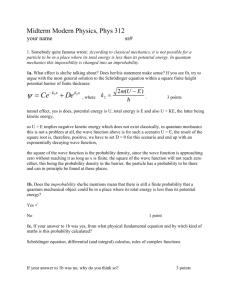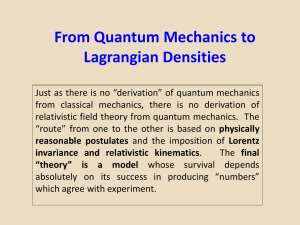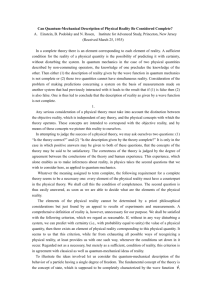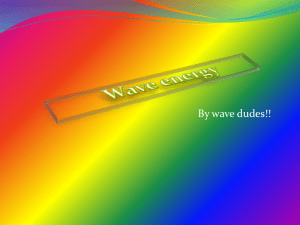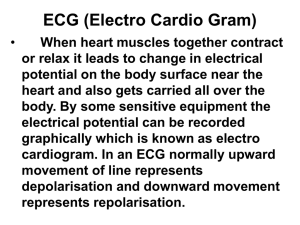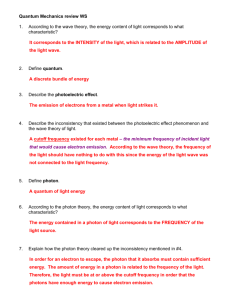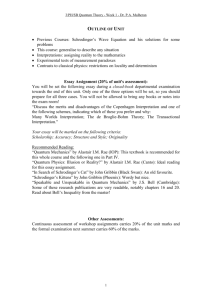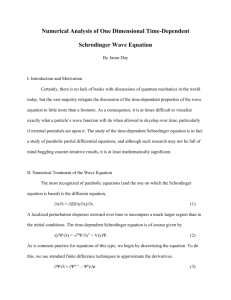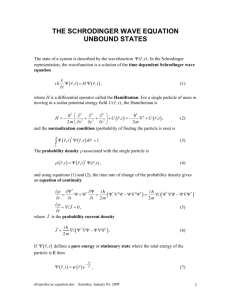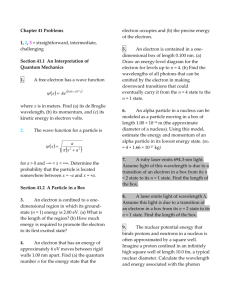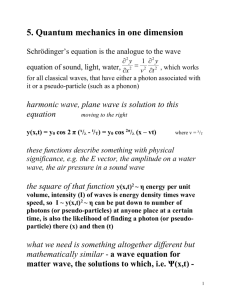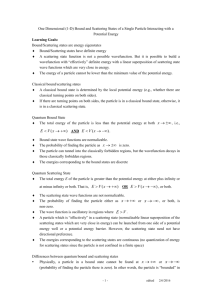CHAPTER 2 Introduction to Quantum Mechanics
advertisement
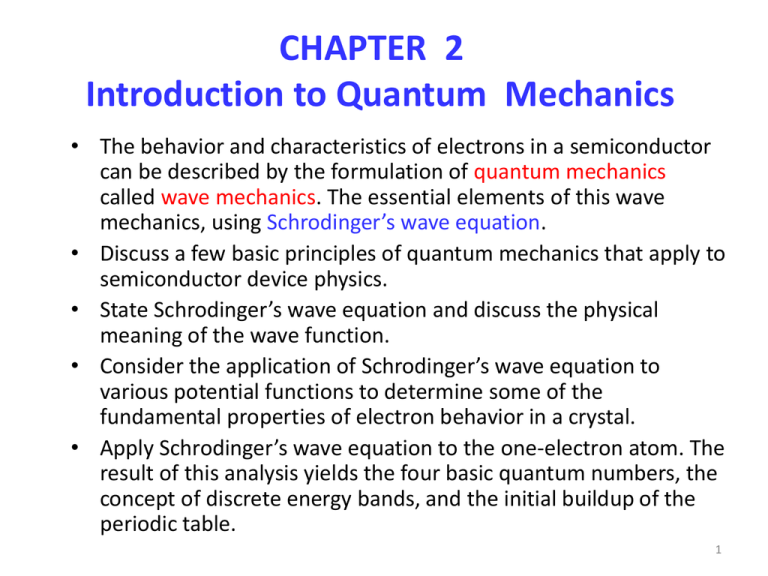
CHAPTER 2 Introduction to Quantum Mechanics • The behavior and characteristics of electrons in a semiconductor can be described by the formulation of quantum mechanics called wave mechanics. The essential elements of this wave mechanics, using Schrodinger’s wave equation. • Discuss a few basic principles of quantum mechanics that apply to semiconductor device physics. • State Schrodinger’s wave equation and discuss the physical meaning of the wave function. • Consider the application of Schrodinger’s wave equation to various potential functions to determine some of the fundamental properties of electron behavior in a crystal. • Apply Schrodinger’s wave equation to the one-electron atom. The result of this analysis yields the four basic quantum numbers, the concept of discrete energy bands, and the initial buildup of the periodic table. 1 2.1 | PRINCIPLES OF QUANTUM MECHANICS 2.1.1 Energy Quanta At a constant incident intensity, the maximum kinetic energy of the photoelectron varies linearly with frequency with a limiting frequency v = v0, below which no photoelectron is produced. 2 thermal radiation is emitted from a heated surface in discrete packets of energy called quanta. The energy of these quanta is given by E = hv, where v is the frequency of the radiation and h is a constant now known as Planck’s constant (h = 6.625 x 10-34 J-s). 2.1.2 Wave–Particle Duality The hypothesis of de Broglie was the existence of a wave– particle duality principle. 3 The existence of a peak in the density of scattered electrons can be explained as a constructive interference of waves scattered by the periodic atoms in the planes of the nickel crystal. 4 5 2.1.3 The Uncertainty Principle • The first statement of the uncertainty principle is that it is impossible to simultaneously describe with absolute accuracy the position and momentum of a particle. • The second statement of the uncertainty principle is that it is impossible to simultaneously describe with absolute accuracy the energy of a particle and the instant of time the particle has this energy. One consequence of the uncertainty principle is that we cannot, for example, determine the exact position of an electron. 6 2.2 | SCHRODINGER’S WAVE EQUATION 2.2.1 The Wave Equation 7 2.2.2 Physical Meaning of the Wave Function 8 2.2.3 Boundary Conditions In Figure 2.5a, the potential function is finite everywhere. The wave function as well as its first derivative is continuous. In Figure 2.5b, the potential function is infinite for x < 0 and for x > a. The wave function is continuous at the boundaries, but the first derivative is discontinuous. 9 2.3 | APPLICATIONS OF SCHRODINGER’S WAVE EQUATION 2.3.1 Electron in Free Space The first term, with the coefficient A, is a wave traveling in the +x direction, while the second term, with the coefficient B, is a wave traveling in the -x direction. 10 2.3.2 The Infinite Potential Well 11 The free electron was represented by a traveling wave, and now the bound particle is represented by a standing wave. 12 the energy of the particle is quantized. That is, the energy of the particle can only have particular discrete values. 13 2.3.3 The Step Potential Function • assume that a flux of particles is incident on the potential barrier. • A particularly interesting result is obtained for the case when the total energy of the particle is less than the barrier height, or E < V0. 14 • A1 A1* is the probability density function of the incident particles • vi A1 A1* is the flux of incident particles in units of #/cm2-s. • vr B1 B1* is the flux of the reflected particles, 15 there is a finite probability that the incident particle will penetrate the potential barrier and exist in region II. 16 17 2.3.4 The Potential Barrier and Tunneling 18 there is a finite probability that a particle impinging a potential barrier will penetrate the barrier and will appear in region III. This phenomenon is called tunneling • Comment of EXAMPLE 2.5 The tunneling probability may appear to be a small value, but the value is not zero. If a large number of particles impinge on a potential barrier, a significant number can penetrate the barrier. • 19 2.4 | EXTENSIONS OF THE WAVE THEORY TO ATOMS 2.4.1 The One-Electron Atom where again n is the principal quantum number. The negative energy indicates that the electron is bound to the nucleus and we again see that the energy of the bound electron is quantized. 20 21 2.4.2 The Periodic Table • The first concept needed is that of electron spin. • The second concept needed is the Pauli exclusion principle. 22

